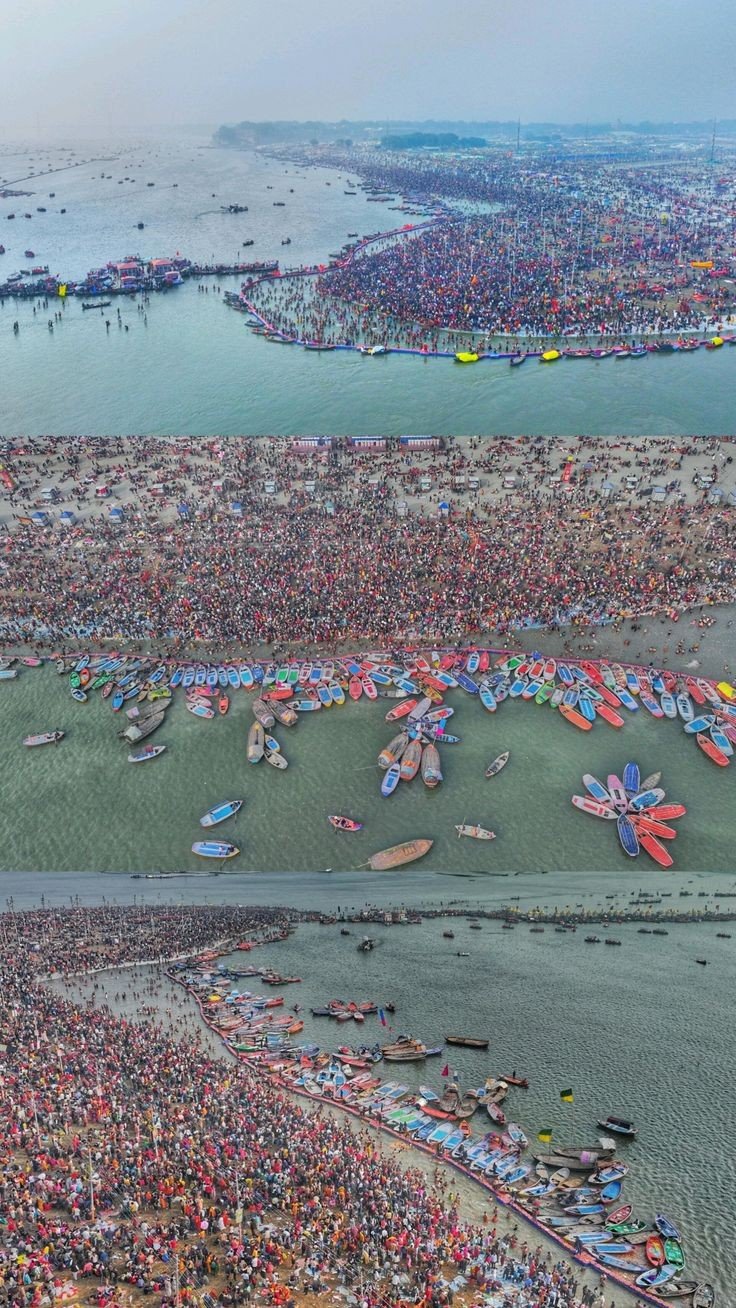The holy city of Prayagraj (formerly Allahabad) is gearing up to host the Maha Kumbh Mela in 2025, one of the largest religious gatherings on Earth. Held once every 12 years at the confluence of the Ganges, Yamuna, and mythical Saraswati rivers, the event is expected to draw over 150 million pilgrims, ascetics, and tourists from across India and the globe. Authorities have begun extensive preparations to ensure safety, sustainability, and seamless logistics for the historic event.
The Maha Kumbh Mela is rooted in Hindu mythology, symbolizing the eternal battle between gods and demons over the nectar of immortality. Devotees believe that bathing in the sacred Sangam during the event cleanses sins and liberates the soul. The 2025 edition will feature six auspicious bathing dates, with the *Shahi Snan* (royal bath) by revered *sadhus* (ascetics) being the highlight.
– The Uttar Pradesh government has allocated ₹3,000 crore ($360 million) to develop temporary cities, bridges, roads, and sanitation facilities.
– Over 5,000 hectares of land will be transformed into tent cities equipped with hospitals, police stations, and disaster management units.
– Eco-friendly measures include solar-powered lighting, water recycling plants, and biodegradable waste management systems to minimize environmental impact on the Ganges.
– A dedicated force of 20,000 police personnel and 10,000 volunteers will manage crowd control and safety.
– AI-powered surveillance drones and facial recognition systems will monitor key areas to prevent stampedes and criminal activity.
– Mobile clinics, vaccination drives, and COVID-19 protocols will be enforced, learning from the challenges of the 2021 Haridwar Kumbh held during the pandemic.
– The event will showcase India’s spiritual heritage through yoga sessions, discourses by spiritual leaders, and cultural performances.
– Local businesses, from street vendors to luxury hotels, anticipate a revenue surge of over ₹1.2 lakh crore ($14.5 billion).
Yogi Adityanath, Chief Minister of Uttar Pradesh: Say “The Maha Kumbh is not just a festival; it is a testament to India’s eternal faith and unity. Our focus is to make this event a model of safety, sustainability, and inclusivity.”
Mahant Narendra Giri, Head of Akhil Bharatiya Akhara Parishad: Say “The Kumbh transcends boundaries—it is where humanity meets divinity. We urge devotees to embrace the spirit of harmony and discipline.”
Environmental activists have raised concerns about pollution in the Ganges, urging stricter regulations on plastic use and waste disposal. Additionally, managing the sheer scale of the crowd while preserving the sanctity of rituals remains a critical task for organizers.
The Kumbh Mela was inscribed on UNESCO’s Representative List of Intangible Cultural Heritage in 2017. The 2013 Prayagraj Kumbh saw a record 120 million attendees, while the 2021 event faced criticism for lax COVID-19 protocols.
As the countdown to 2025 begins, the Maha Kumbh Mela stands as a beacon of India’s spiritual legacy and organizational prowess. For millions, it is not just a pilgrimage but a journey of the soul—a reminder of the timeless bond between humanity and the divine.









Leave a Reply